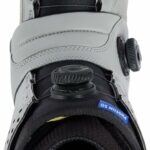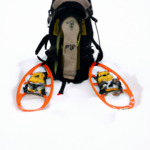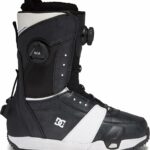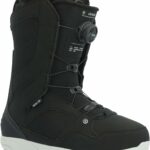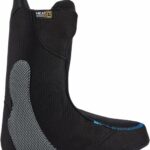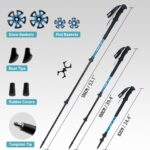So, you’ve got a new Burton Snowboard and you’re ready to hit the snowy slopes. But before that, you need to do one key thing – attaching the bindings. This might seem like an intimidating task, but don’t sweat it. You’re about to learn how to easily and securely fit your own bindings onto a Burton Snowboard, ensuring your ride down the mountain will be safe and smooth. In this helpful how-to guide, you’ll find clear, step-by-step instructions that will get your shiny, new Burton snowboard deck ready for action in no time. So, let’s get started, shall we?
Understanding the Importance of Snowboard Bindings
Snowboarding is an exhilarating activity that combines the thrill of fast, downhill slopes with the freedom of carving your own path. But regardless of your skill level, there is one piece of equipment essential to a successful snowboarding experience – bindings.
The Role of Bindings in Snowboarding
Simply put, snowboard bindings are the critical link between you and your board. They translate your movements into actions on the slopes. Leaning forward, backward, or to the side all begins with your feet – and it’s through the bindings that these commands are transferred to your snowboard. Without bindings, steering your snowboard would be practically impossible.
Why Quality Bindings Matter
Just like in many other sports, quality gear can make a huge difference on the slopes. Cheap or poorly made bindings may not transfer your movements as effectively, leading to less control and lower overall performance. Worse, they might break mid-ride, putting you at risk for injury. That’s why it’s crucial to invest in high-quality bindings from trusted snowboard equipment manufacturers like Burton.
Specific Benefits of Burton Bindings
When it comes to reliable snowboard gear, Burton is a name you can trust. Their bindings are not only made from high-grade materials for durability but are also designed with specifics in mind – from the type of snowboarding, you prefer to your foot size. This focus on customized fitting ensures that your Burton bindings will enable optimal control and responsiveness during your ride.
Types of Burton Snowboard Bindings
Burton offers a wide variety of bindings to choose from, catering to different styles and skill levels.
Burton Strap Bindings
Strap Bindings are the most common type of snowboard bindings. They offer versatility and are compatible with nearly all snowboard boots. Burton’s strap bindings provide a secure fit with adjustable straps that you manually buckle and tighten for a customized fit.
Burton Step On Bindings
For those seeking convenience without compromising performance, Burton’s Step-On bindings are an excellent choice. These bindings eliminate the need for straps – instead, they feature a quick-release system that allows you to step in and out effortlessly. This ease of use does not affect performance, ensuring you still enjoy a high level of control on your rides.
Choosing the Right Type for You
Deciding between strap bindings and step-on bindings boils down to personal preference. Both types offer excellent performance, so it’s about what you find most comfortable and what aligns with your riding style.
Getting to Know Your Burton Snowboard
Before mounting your bindings, it’s essential to familiarize yourself with your Burton snowboard.
Understanding the Insert Pattern
Your snowboard comes with an insert pattern – the pre-drilled holes where your bindings will attach. Burton boards feature the 3D or The Channel insert patterns. Knowing this will help you align your bindings correctly.
Identifying the Nose and Tail
Your snowboard has a distinct nose (front) and tail (back). Determining which is which affects how you position your bindings.
Knowing the Significance of Stance Width and Angles
Your stance width (the distance between your bindings) and angles (the direction your feet point) significantly impact your comfort, balance, and control. As such, they’re crucial factors to consider before mounting your bindings.
Preparation Before Mounting Bindings
Before you mount your bindings, there are a few steps you need to take.
Gathering Necessary Tools
You’ll need a Phillips-head screwdriver. If your binding uses Burton’s Channel system, you’ll need a compatible mounting hardware that usually comes with the bindings.
Cleaning the Snowboard Surface
Ensure your snowboard’s top surface is clean and dry. Dirt or moisture can affect how your bindings are mounted.
Checking the Binding Components
Inspect your bindings before mounting them to identify any loose parts or signs of wear and tear.
Positioning the Bindings Correctly
Getting your bindings in the correct position is vital for efficient riding.
Determining Your Stance
Are you regular or goofy-footed? Regular footers will have their left foot forward, while goofy footers lead with their right foot.
Setting up the Binding’s Angle
The angle of your bindings affects how you ride. Forward angles are common for carving and racing, while a duck stance (toes pointing outwards) is popular for freestyle riding.
Positioning the Bindings on the Snowboard
Ensure your bindings are centered over your board, with equal amounts of toe and heel overhang for optimal balance.
Properly Mounting Burton Bindings
Once you’ve positioned your bindings, it’s time to secure them.
Aligning the Holes
Align the holes on your bindings with the insert pattern on your board.
Securing the Bindings with Screws
Place the screws through the bindings and into the inserts, tightening them with your screwdriver. Do not overtighten, as this can damage your board or bindings.
Ensuring Proper Tightness
Your bindings shouldn’t move on your board. If they do, you may need to tighten the screws a little more.
Adjusting Burton Bindings for Comfort and Efficiency
Your bindings should be comfortable and efficient while you ride.
Adjustment Mechanisms on Burton Bindings
Burton bindings have multiple adjustment features, including strap length, forward lean, and highback rotation.
Customizing the Fit
Take the time to experiment with these adjustments until you find the fit that works best for your riding style.
Making Adjustments for Different Terrain and Riding Styles
Depending on whether you’re doing freestyle or freeriding, downhill or off-piste, you might need different adjustments. Don’t be afraid to experiment to find what works best for your style.
Safety Checks After Mounting
Safety should always be your priority when snowboarding. After mounting, check your bindings.
Checking for Any Loose Screws
Visual inspection can catch any screws you might have missed.
Inspection of Binding to Board Attachment
Wiggle your bindings to ensure they’re secure and don’t move on the board.
Testing the Bindings While Wearing Snowboard Boots
Step into your bindings wearing your boots to see how they feel and make sure everything is working correctly.
Maintaining Your Burton Snowboard Bindings
Regular maintenance of your Burton bindings will ensure a long lifespan and optimal performance.
Regular Cleaning and Maintenance Tips
Cleaning your bindings after each ride will help prevent dirt and debris from eroding parts. Also, keep an eye on your bindings for signs of wear or damage.
Common Problems and How to Fix Them
Common problems include loose binding parts or damaged straps. In many cases, these are easily fixable with a simple tightening of screws or strap replacements.
Knowing When to Replace Your Bindings
Despite the best maintenance practices, bindings do wear out. If you notice consistent problems or decreased performance, it might be time for a new pair.
Common Mistakes When Mounting Burton Bindings
While the process of mounting bindings is straightforward, avoid these common mistakes.
Incorrect Stance Measurements
An incorrect stance can impact your comfort and control, and even lead to injuries. Spend time determining your ideal stance.
Over Tightening of Screws
Over tightening screws can damage your bindings or board. Secure them so they’re tight but not excessively so.
Not Periodically Checking the Bindings
Regular checks of your bindings to ensure they’re secure and in good condition can prevent mid-slope mishaps. Pay attention to your gear, and you’ll have a safer and more enjoyable snowboarding experience.
- What Snowboard Bindings Should I Get? - January 23, 2024
- What Size Screws For Snowboard Bindings? - January 23, 2024
- How To Snowmobile On Water? - January 23, 2024


